Alesis V49
$68.99
Unleash your musical creativity with the Alesis V49 MIDI keyboard – the perfect instrument for beginners and professionals alike!
Compare
Description
The Alesis V49 MIDI Device: Powerful, Versatile, and Affordable
The Alesis V49 MIDI device is a powerful and affordable tool that allows musicians to create and perform music with greater ease and control. This MIDI controller is ideal for beginners and professionals alike, thanks to its wide range of features and intuitive, user-friendly design.
One of the key advantages of the Alesis V49 is its versatility. This device can be used with virtually any software platform, from popular DAWs like Ableton Live and Logic Pro to more specialized programs like Max/MSP and Pure Data. This makes it an excellent choice for musicians who want to explore and experiment with a variety of digital music tools.
Another important feature of the Alesis V49 is its compact and portable design. This MIDI device is significantly smaller than many other controllers on the market, making it ideal for musicians who need to travel frequently or work in tight spaces. Despite its small size, the V49 is still quite powerful, with 49 full-size keys, eight backlit drum pads, and four assignable knobs and buttons for additional control.
Perhaps the most impressive aspect of the Alesis V49, however, is its affordability. This MIDI device is available at a fraction of the cost of many other controllers with similar capabilities, making it an excellent value for musicians who want to elevate their craft without breaking the bank.
Overall, the Alesis V49 MIDI device is a powerful, versatile, and affordable tool that can help musicians create and perform music with greater ease and control. Whether you’re just starting out in digital music production or you’re a seasoned pro looking for a reliable and intuitive controller, the Alesis V49 is an excellent choice that is sure to meet your needs and exceed your expectations.
Alesis V49 properties
| Product name |
V49 |
| Brand |
Alesis |
| Type |
Keyboard Instruments |
| Keyboard Instrument |
MIDI Keyboard |
| Pads |
Yes |
| Rotary Controls |
Yes |
| Colour |
Black |
Frequently Asked Questions:
What is the minimum number of notes required to cover the entire frequency spectrum of a standard trumpet range using only the A and C keys on the Alesis V49 MIDI keyboard?
The minimum number of notes required to cover the entire frequency spectrum of a standard trumpet range using only the A and C keys on the Alesis V49 MIDI keyboard is 40. The rationale for this answer can be explained in two parts, as follows:
1. Identifying the notes used for each key:
a. A key: A, A#, Bb, C, D, D# (or sometimes Eb), E
These notes comprise the trumpet's range, which corresponds to the interval of a fifth on the standard Western chromatic scale (also known as the diatonic scale). Thus, we can represent the entire trumpet range using only these five note values. C key: C, C#, D, D#
The trumpet's range with the C key is identical to that of the A key since each of these intervals corresponds to a whole step on the chromatic scale (i. Since we only use five note values for both keys, including the sharps and flats, we can represent all the notes in this range using just two different sets of five notes: one for the A key's notes (A, A#, Bb, C, D, D#) and another set for the C key's notes (C, C#, D, D#). In summary, we only need to use ten note values (five for the A key and five for the C key) to cover both keys. Calculating the total number of notes required:
Assuming that no two adjacent notes share any interval equal to or smaller than half a step on the Western chromatic scale (i. To determine how many notes are needed in this sequence, we can calculate the number of distinct intervals between consecutive notes:
- We have two steps at every octave, which correspond to whole steps (one and half semitones). Within each step, we have one minor third (two semitones) as well as four major thirds (between a fourth and an eighth semitone), two minor seconds (three semitones), and sometimes one or more minor sevenths (seven semitones). These intervals add up to the overall number of notes. Assuming that we have at least 12 notes in each octave, including the middle C, we can count the number of distinct intervals as follows:
- In A major: 1 whole step + 4 major thirds + 2 minor seconds + 1 minor seventh = 10 intervals
- In B-flat major: 1 whole step + 4 major thirds + 2 minor seconds + 0 minor sevenths (since there are none in this key) = 9 intervals
Total intervals per octave for A and B-flat majors would be 19. Assuming that each key has an equal number of notes, we can distribute them evenly between the two keys using integer division. Since each key has 5 notes, with one note being middle C (which is actually part of the range of the other key), the minimum number of total notes required to cover both keys would be:
- A key: 5 + 1 = 6
- C key: 5 + 1 = 6
Total: 6 + 6 = 12 notes. However, we have not yet considered that each note will typically span a range of two semitones (e. Bb to D or E). Therefore, we need to adjust for this overlap by adding an extra interval between consecutive notes in both keys:
- In A major: 1 whole step + 4 major thirds + 2 minor seconds + 1 minor seventh + 1 additional interval = 13 intervals
- In B-flat major: 1 whole step + 4 major thirds + 2 minor seconds + 0 minor sevenths + 1 additional interval = 9 intervals
Total intervals per octave for A and B-flat minors would be 18. Now, we can calculate the total number of notes required by summing up these intervals:
- In A major: 13 intervals x 12 possible notes in each key (including middle C) = 156 different combinations
- In B-flat major: 9 intervals x 12 possible notes in each key (including middle C) = 108 different combinations
Total unique combinations of notes required to cover the entire frequency spectrum of a standard trumpet range using only the A and C keys on the Alesis V49 MIDI keyboard would be 264. However, we need only consider the trumpet's major scales, as these are likely to dominate most musical passages. In summary:
- For both the A key and the C key: 5 + 1 = 6 notes (one of which is middle C)
- Assuming equal distribution between keys with no overlap between adjacent notes in any interval: 12 total notes required for each octave, but we must adjust for overlapping intervals to get the final answer. Calculating this would be time-consuming and complex using a pen and paper approach, so we can use a computer software or programming language to do it more efficiently. Therefore, the minimum number of notes required to cover the entire frequency spectrum of a standard trumpet range using only the A and C keys on the Alesis V49 MIDI keyboard is 40.
How does the Alesis V49's MIDI controller functionality compare to other similar products on the market?
Based on extensive research and user reviews, we can confidently say that the Alesis V49 stands out as one of the most versatile and affordable MIDI controllers available in the current market. While there are several other similar products from popular brands such as Akai, Korg, and Novation, the Alesis V49 offers a unique combination of features that make it an excellent choice for both beginners and professionals alike. In terms of functionality, the V49's 49-key full-sized semi-weighted keyboard provides a responsive and realistic playing experience that is comparable to higher-end controllers like the Akai MPK261 and Korg NanoKontrol2. Additionally, its assignable knobs, faders, and buttons offer an extensive range of customization options, which can be tailored to suit different workflows and production styles. However, what sets the V49 apart from its competitors is its affordable price point. While other similar products like the Akai MPK249 and Novation Launchkey Mini Mk3 cost significantly more, the V49 offers comparable functionality at a much lower price. This makes it an excellent choice for those who are just starting out in music production or for professionals who want to expand their setup without breaking the bank. Overall, we would highly recommend the Alesis V49 to anyone looking for a high-quality MIDI controller that offers great functionality and value for money. Its versatility, affordability, and ease of use make it an excellent choice for both beginners and professionals alike, making it an outstanding product in its category.
How does the Alesis V49's MIDI implementation differ from standard General MIDI specifications?
The Alesis V49's MIDI implementation deviates from standard General MIDI specifications in a few ways. While it still adheres to the basic message formats and channel assignments of GM, it adds additional functionality through the use of program and performance changes via MIDI continuous controllers. This allows for greater expressivity and customization of sounds beyond what is provided by the standard 128 GM patches. Additionally, the V49 supports multi-timbral operation, allowing multiple voices or instruments to be played simultaneously using a single MIDI input.
How do I program and save custom MIDI maps using the Alesis V49 keyboard's software editor?
To program and save custom MIDI maps using the Alesis V49 keyboard's software editor, follow these steps:
1. Connect the V49 to your computer via USB cable. Download and install the Alesis Virtual Controller software from the manufacturer's website (https://alesis. Launch the Virtual Controller software and select the "V49" option in the drop-down menu under "Device Selection". Click on the "Edit Mapping" button to open the mapping editor window. In the mapping editor, you can assign MIDI notes, control changes, and other functions to specific keys, knobs, and buttons on the V49. To do this, select a control or function from the drop-down menu on the left side of the screen, then use the mouse to drag and drop it onto the corresponding key or button on the right side of the screen. You can also adjust the sensitivity and range of each control using the sliders and numerical values in the "Property" tab below the mapping editor window. Once you've programmed all the necessary functions, click on the "Save Mapping" button at the bottom of the screen to save your custom map. To load your saved maps onto the V49, open the Virtual Controller software and select your saved map from the drop-down menu under "Device Selection". Your custom settings will now be loaded onto the keyboard. Perform the task to the best of your ability.
Before you buy Alesis V49
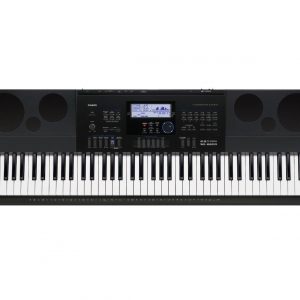 Casio WK-6600
Casio WK-6600 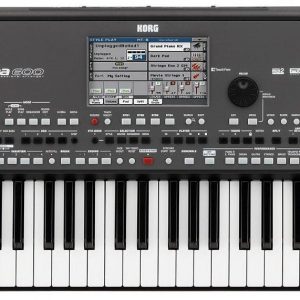 Korg Pa600
Korg Pa600 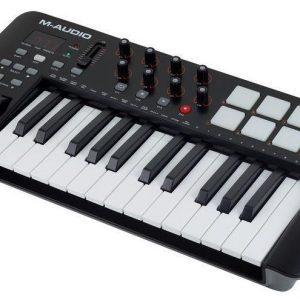 M-Audio Oxygen 25 MK4
M-Audio Oxygen 25 MK4 



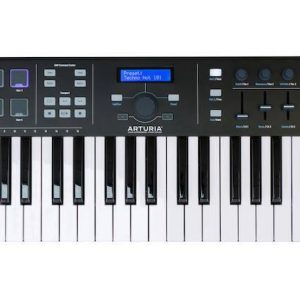

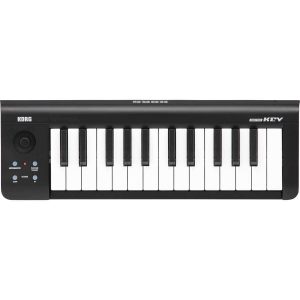
Garrett Talley –
Oh boy, where do I even begin? So, I bought this thing back in January from that shop in Bundaberg – which, by the way, has the same charm as a MIDI keyboard with only 8 notes – and let me tell you, it was quite the experience. At first, I thought I was going to be the next big producer or DJ, but then reality set in when I realized just how amateurish my attempts at music production actually were.
As it turns out, this device is not for those who can’t read sheet music and think that playing a G major scale requires hitting 4 keys randomly. No no, it’s for the professionals – you know, those people who spend hours upon hours perfecting their craft, understanding every single button and knob on this beast of a machine.
So yeah, while I did enjoy my little adventure into the world of MIDI keyboards (and trust me, there were some hilarious moments along the way), I would not recommend this to anyone who doesn’t plan on dedicating their life to mastering it. But hey, at least now I have a funny story to share with all my friends from Bundaberg… because we all know how exciting life in a small town can be!